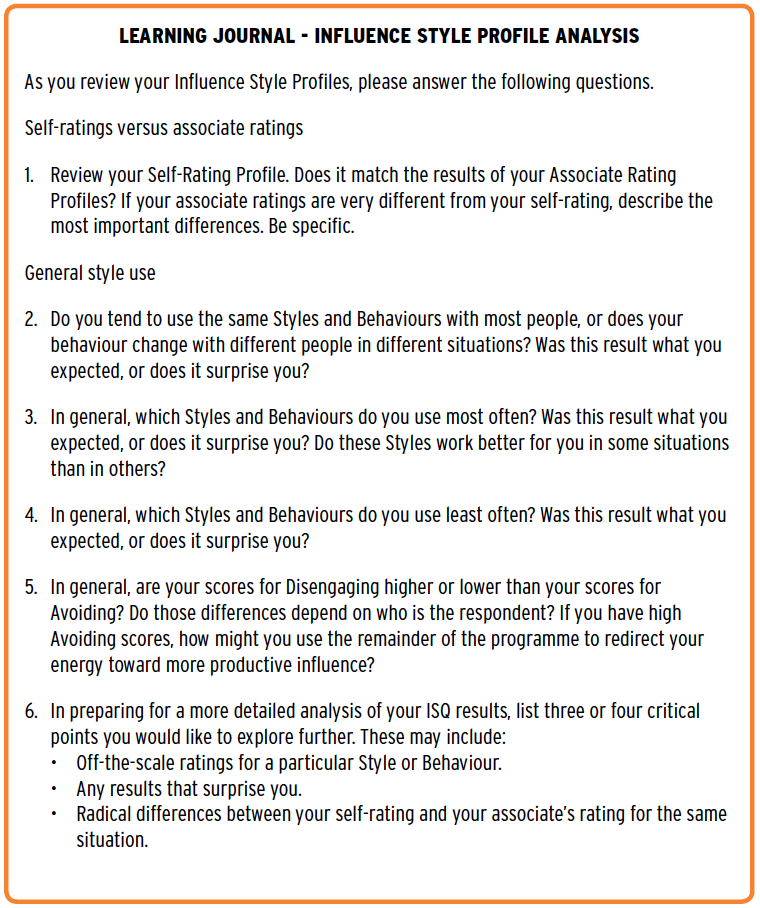As part of the Pre-Programme Assignment, you distributed Influence Style Questionnaires (ISQ) to your colleagues and completed a self-rating. Then, you printed the results on ISQ graph.Now, as part of your self-assessment activities, you will review and analyse your ISQ data.
Objective: Learn more about your current influence skills by:
- Comparing your self-perception with the perception of others.
- Comparing the perceptions of others (different raters represent different ongoing influence situations).
- Identifying three or four critical points for further analysis.
Your facilitator will conduct a brief discussion of guidelines for analysing your ISQ profiles. You then will review your Profiles and identify critical points for further analysis.
Guidance
Look for patterns between and within Styles, and across different relationships.
Identify 2-3 Critical Points:
- Very high or low scores
- Surprises
- Radical differences between raters (including self-rating)
Focus on Critical Relationships
- High Priority
- Task/relationship is out of balance
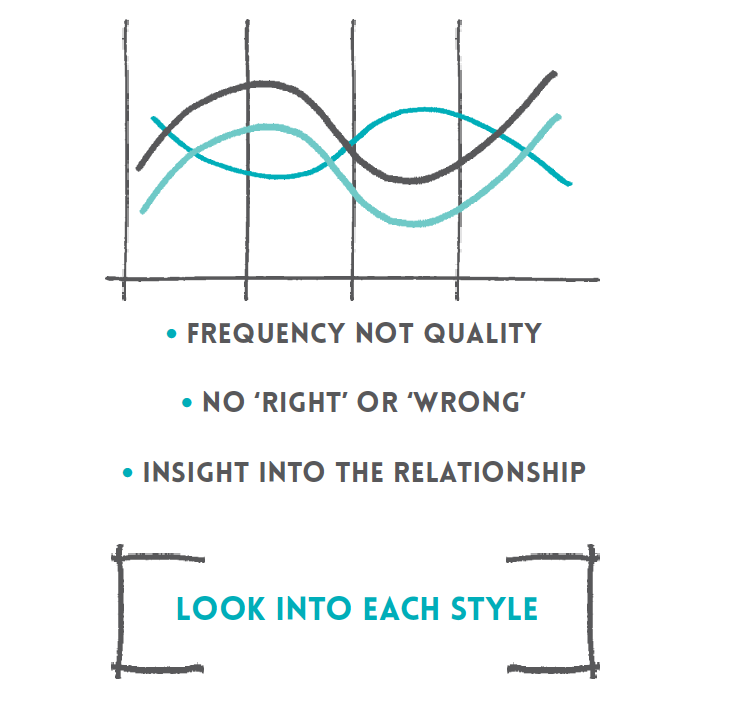
Interpreting Your Influence Profiles
Influence Patterns
Look for patterns, not measures. The numbers on the ISQ Profiles provide a relative picture of your influence practice, not an absolute one. For example, the Profile below shows a marked difference in the use of each Style: more Persuading, less Asserting, some Bridging and Attracting, and less Moving Away. If increasing your Style flexibility is important in this situation, you might want to develop the Styles you use less frequently.
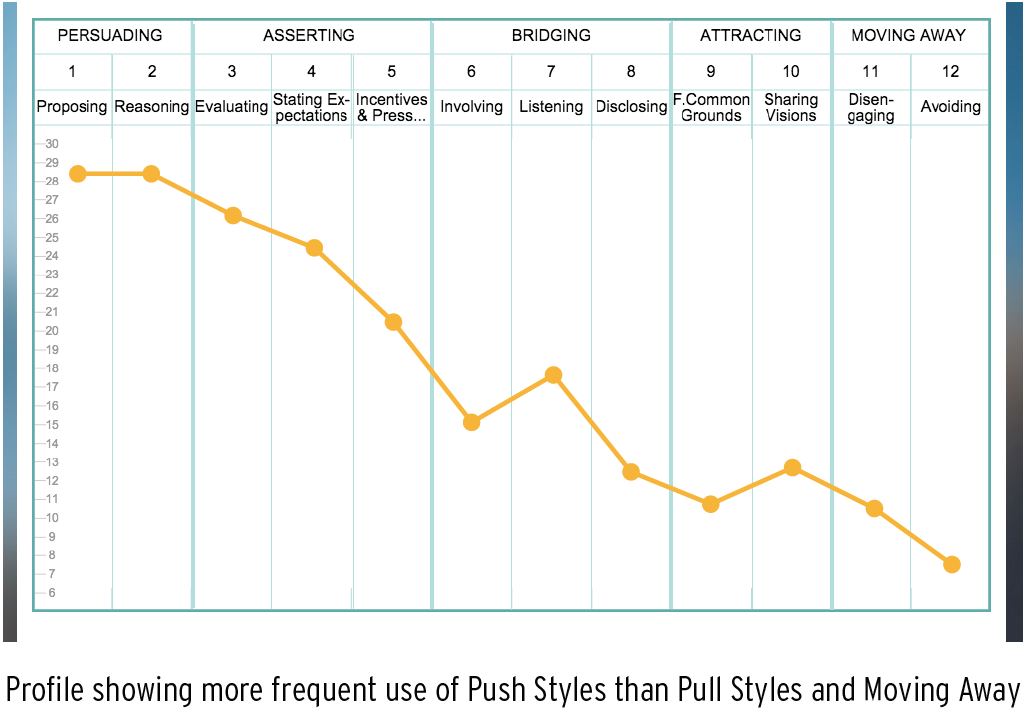
You also might notice a difference in your use of the Behaviours within a Style. For example, the Profile below shows less frequent use of Incentives and Pressures compared to the other Asserting Behaviours. Our research shows that the balanced use of each Behaviour within a Style leads to greater influence effectiveness. If increasing your influence effectiveness is important in this situation, you might want to work on developing the Behaviours you use less frequently.
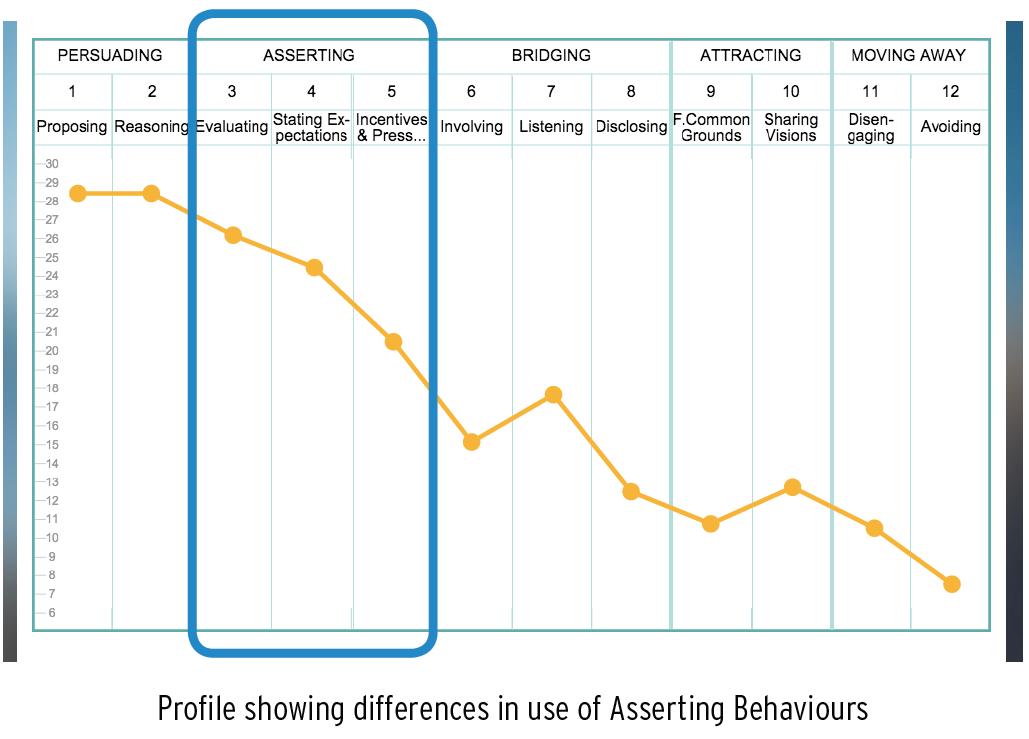
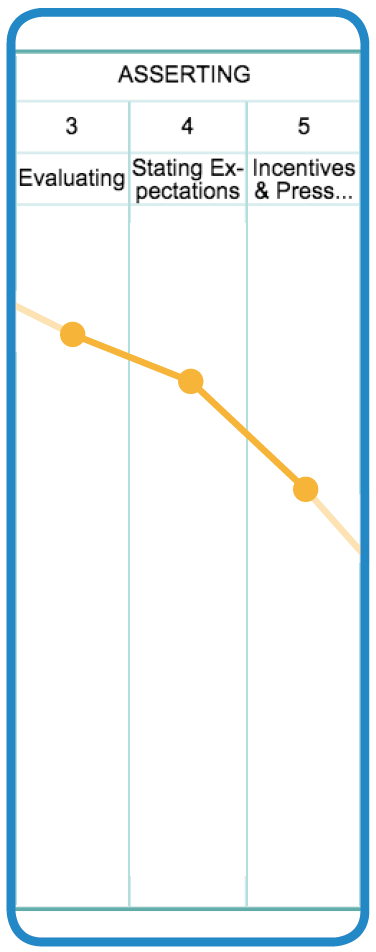
Consistency versus Variability
Study the shapes of the Profiles (Style-to-Style and the Behaviours within each Style). The overall shapes denote your influence patterns. Look for consistency versus variability. In a consistent Profile, one curve may be higher than another or more extreme in its highs and lows, but the shapes are similar. The shapes show a similar influence pattern whether for a manager, peer, or direct report. In this case, consider the fact that all situations are not the same and that Influence Style flexibility may increase your effectiveness.
On the other hand, your Profiles may show a great deal of variability: one curve up and one curve down. Be careful in interpreting these results. Style flexibility is not necessarily a path to increased effectiveness if you use an inappropriate Style for the situation. A less productive relationship showing Style flexibility may require some adjustment. A productive relationship showing Style flexibility may be better left alone. It is up to you to decide, based upon your knowledge of the situation and the target.
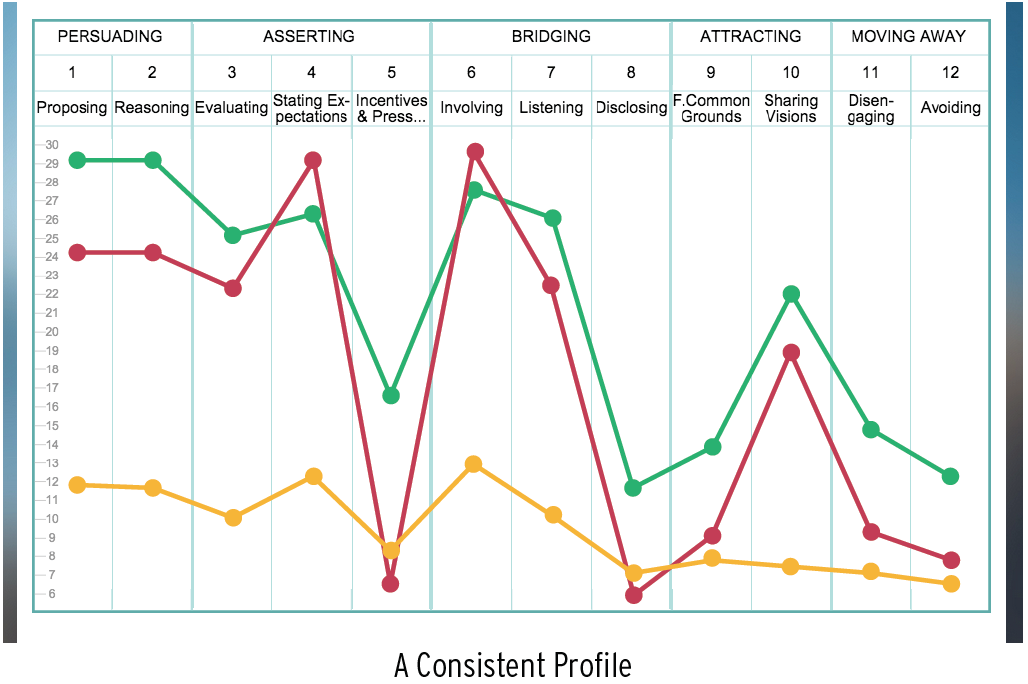
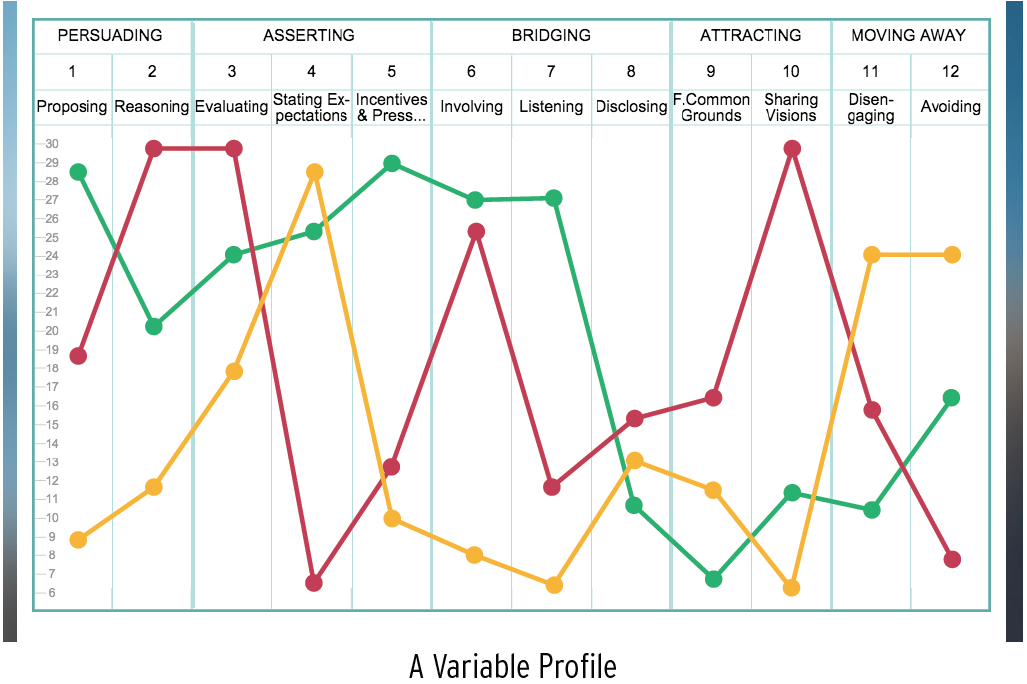
Critical Points
Identify critical points for further analysis. These may include:
- Off-the-scale ratings. The scale does not show the extremely high or low scores. However, if your data go above or below the scale, this may be a strong message for you to examine.
- Surprises. Note results that surprise you, particularly in the situations you identify as either “productive” or “less than productive.”
- Radical differences among raters. Look for strong differences between your self-rating and others’ ratings of you, as well as differences among the raters themselves.
